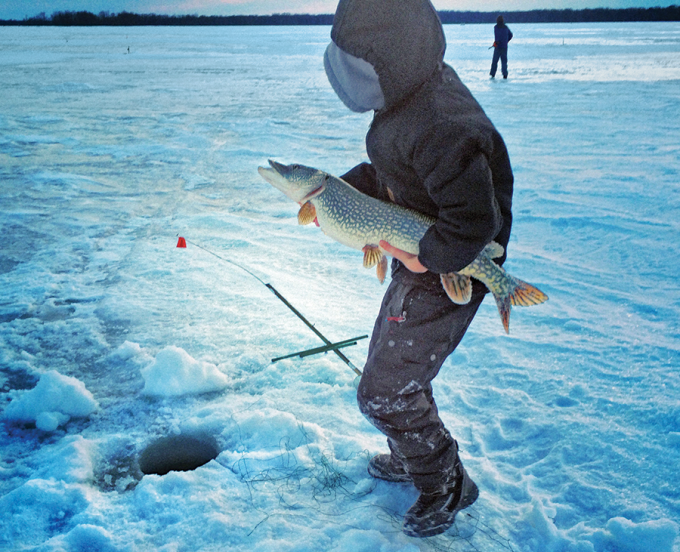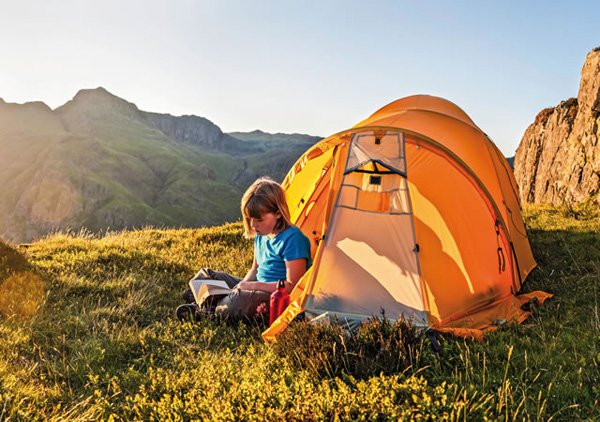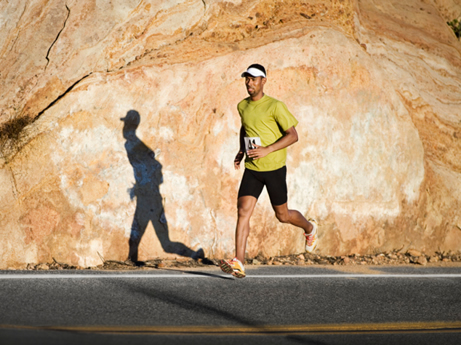Slip Bobbering... High as a Kite!
No, I am not talking about having a few stiff drinks while bobber fishing!
I am introducing you to a great technique to use the wind to help you get those super spooky shallow weed line... or shy rock pile walleyes.
I use a Bait Rigs Walleye Willospoon and dress it with 1/4 to 1/2 a crawler. Strange as it may sound all fish have a real hard time stripping crawlers from this lure. It is because the hook pivots so easy and the spoon is near weightless. This lure has tons of flash and flutter in "walleye-chop" below a bobber.
Go into the crawler with the hook, from the broken end. I "worm" the crawler part way on the hook so that there is still about one third of the shank of the hook showing. You do not want to run the worm all the way up the hook shank as to touch the blade... this kills the action of the blade.
This Walleye Willospoon will wiggle/wobble like a crank bait when pulled forward and flutter much better than any conventional jigging spoon on its fall. This is because it is so light!I use Berkley Trilene 8lb XL for this rig.
Darker water lets you use heavier line but you risk reduced flutter on some stiffer lines. About two feet above the Walleye Willospoon, I place a split-shot of enough size to set the slip-bobber in an upright position, but plenty enough weight too... so that it rides just deep enough to indicate a light bite. You want to be able to see this bobber from some distance... so do not use a dinky/tiny bobber.
Fishing the windy side of the lake, I stop far enough from the weeds (or rock pile) so that I do not spook the fish with my motor. I let the wind take the boat in closer or use my trolling motor to quietly get within casting range. I drop anchor. I set the bobber-stop on the line so that it is at the depth I want to start, say 12 feet. With the wind at my back and the boat now anchored by the rope tied to the bow eyelet I am set to start working the "flying like a kite" technique. The reason you want your rope tied to your bow eyelet is, that when tied there, compared to a cleat on the rail, the anchored boat will not track from side to side in the wind. It will remain much more still in place and ride the waves quietly. This way, the waves will hit the bow, ans not be smacking the boat sides nearly as much (this noise spooks the fish).
Now stay with me here.... this is the tricky part.
When set up like this, a cast in any direction will eventually end up directly behind the boat. The wind will slowly carry the slip-bobber around behind the boat.
Straight behind you where the bobber ends its drift we'll call the 12:00 position (for the point of illustration). Cast behind the boat to 12:00 and determine where the 12 foot water starts. You can tell by seeing if your bobber stands up. If it stays laying on its side, you are shallower that 12 feet. Now cast to your left at a 10:00 angle, either side. If the bobber is not standing up, this means you have cast or drifted too far "in" and you are up shallow... in less than 12 feet of water. Reel in some line SOME DISTANCE and find the depth you are looking for so the bobber is set upright.
You know that if you keep your line low to the water that the wind will not catch the line and so quickly pull the bobber back to 12:00, right?
Wait a few moments before you hold the rod up high to intentionally make the bobber start to move.
Now make the move towards 12:00.
When the wind catches the line and the bobber has started to moved along the edge of the weeds or drop-off a number of feet, then lower the rod to stop the side-ward movement. Let the bobber return to upright. If it does not return to upright reel in a bit because you are again too shallow. When ready to start moving along the drop again, you simply raise the rod.
You are using the wind to fly the bobber in a diagonal movement, right down the side of the weeds or drop. You are using the line like a kite string to control the bobber!
The speed you move will determine the depth the Walleye Willospoon travels. It will wiggle/wobble when the wind pulls the bobber, and then flutter back into a vertical position as the bobber sits back upright. The waves lifting the Walleye Willospoon will make it flutter on each rise and fall as you remain in this position. You can "work the spoon" depth, by watching to see if the bobber remains upright or not. This tells you that you are at the target 12 foot depth.
This method allows an angler to cover a greater amount of water as the bober travels as far as you can cast the rig from the left side back to behind the boat at 12:00.
With practice this becomes an art! You can fish at a desired depth and never get any where close enough to spook the fish. That is if you have a good long rod and a reel that you can cast a long distance. I do a fan cast method where I start with a cast close to the boat and work out further away with every next cast. This way I do not pull hooked fish over the tops of fish between, spooking them.
This technique works great on horseshoe turns & drops too. Try this method and remember to take you time and work the spoon slow. You will catch many more fish by not spooking them.
By Dave "Hoggie" Hoggard
See Hoggie on the Minnesota Forum
Reservoir Smallmouth Anglers..A Weird Lot
Fall Fishing Can Be All About Spinner Baits


